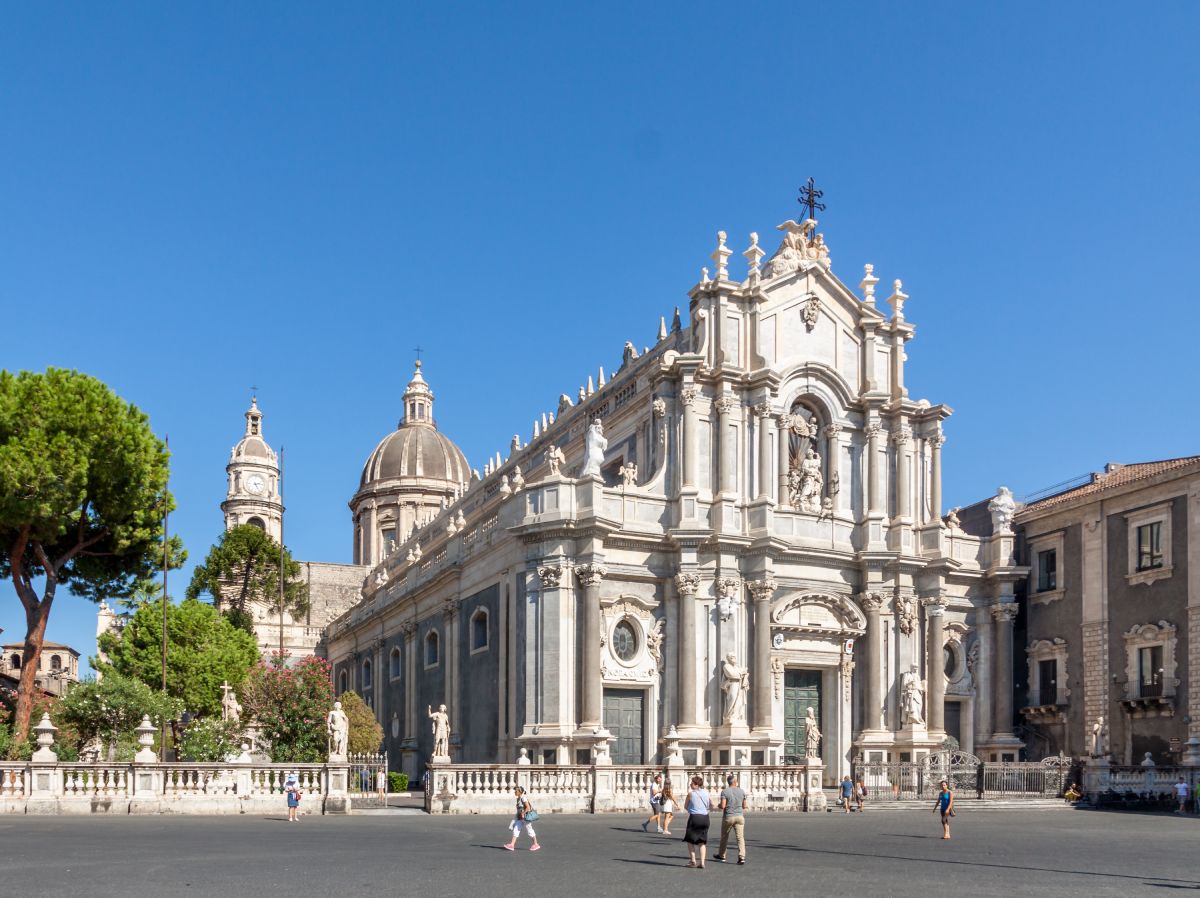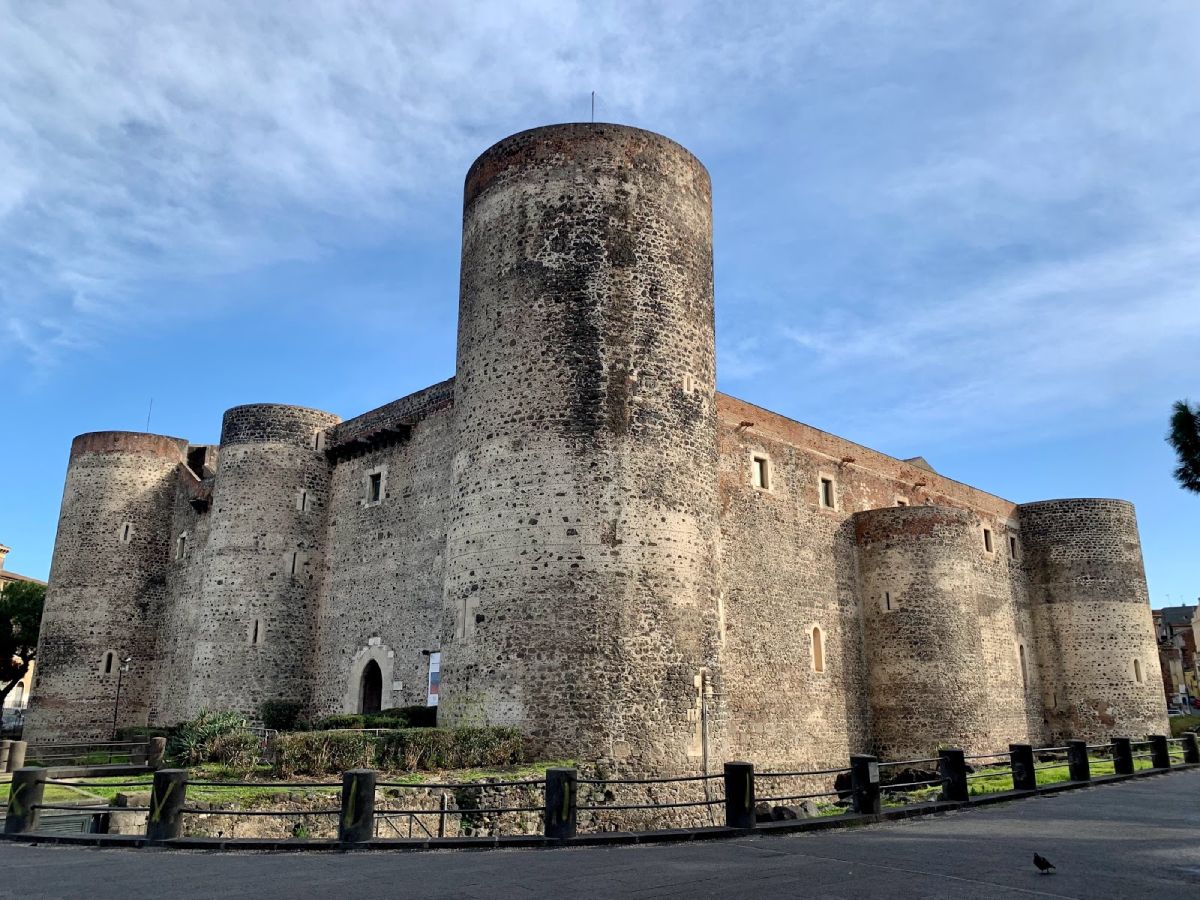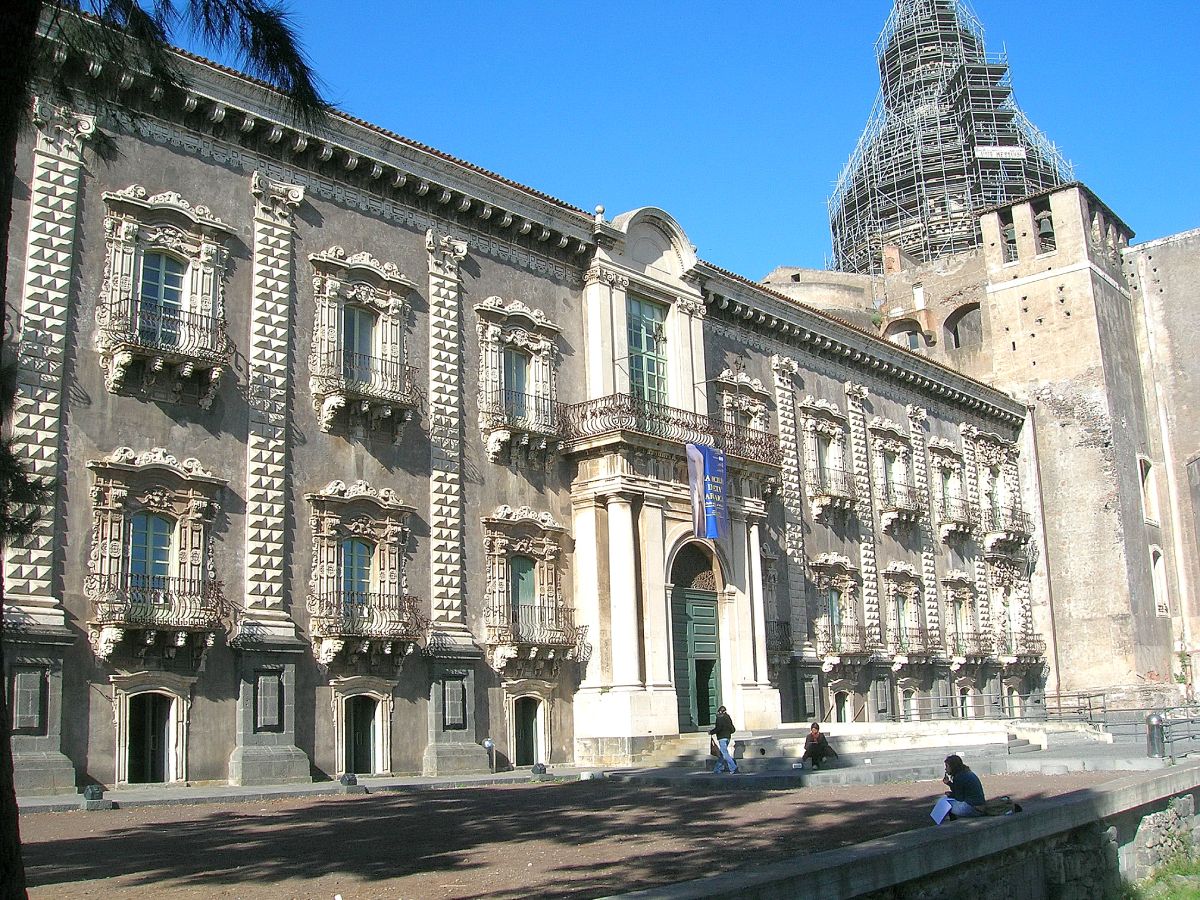Catania is a city on the east coast of Sicily, situated at the foot of Mount Etna. Famous for its active volcano, Catania is also the second largest city in the Sicily region and has a rich history. It was one of Italy’s most influential cities in the past, and it still has many attractions to visit in a day or so.
Table of Contents
Catania: must-see attractions
Catania is a beautiful city with a rich history and culture that is definitely worth exploring. The Greeks may have laid the city’s foundations, but it has been shaped and influenced by multiple occupations, including Roman occupation. As a result, Catania offers a fascinating mix of ancient and modern attractions. From sipping aperitifs along the castle walls to exploring the majestic Mount Etna, there is something for everyone in Catania.
PLAN YOUR TRIP TO ITALY
Stay connected on the go with a Holafly eSIM, offering unlimited data at reliable 3G, 4G, and LTE speeds across Italy.
For added peace of mind during your travels, take out Heymondo travel insurance, perfect for a stress-free and well-protected adventure.
If you plan to explore beyond the main cities, renting a car is the best way to discover Italy’s hidden gems at your own pace.
To get around Catania, I recommend walking as it is a great way to experience the city’s narrow streets and beautiful architecture. Plus, it helps you avoid traffic and the hassle of finding parking, which can be challenging in the city centre. However, if you plan to explore the surrounding areas, such as Mount Etna or the seaside villages, guided tours are your best option if you have little time to spend in the city.
Catania has many historical buildings, such as the Cathedral of Saint Agatha and the Ursino Castle, which hosts the Civic Museum. During your visit, try delicious local cuisine, such as arancini, pasta alla norma, and granita. And, of course, wear comfortable shoes as there is plenty of walking.
Mount Etna: the volcano of Catania
One of the must-see destinations during a visit to Catania is a trip to Mount Etna, which towers over the city and is the highest active volcano in Europe. It is also the symbol of Sicily, so it definitely worth a visit. With just a day to spent in Catania, you can choose an half-day tour to Mount Etna, but if you have more time I recommend a full day trip to reach the summit.
The height of the volcano is constantly changing due to its eruptions. When it erupts, its height decreases, while the accumulation of lava during an eruption makes it rise. As a result, it is difficult to determine its exact height, with the most recent measurement being 3,357 meters.
The best time to visit Mount Etna is late spring, summer, or early autumn. There is less chance of encountering snow during this time unless you want to ski on an active volcano. Mount Etna has two skiing facilities, and despite being in the south of Italy, the weather is freezing in winter, and snowfall can be heavy.
The climb up the volcano takes about half a day and passes through abandoned settlements. During the ascent, you will enjoy the surreal scenery of the lava terrain and have an unobstructed view of the Mediterranean Sea. You can walk up to 2,000 meters independently but need a certified guide to reach the upper craters. Check the tours to find the one that suits you best according to the time available and your fitness level.
The Cathedral of Saint Agatha and the elephant statue
The most prominent building in Catania is the beautiful Baroque cathedral in Piazza del Duomo. It is dedicated to the city’s patron saint, St Agatha, and was constructed between 1086 and 1090, soon after the Normans took over Catania. The cathedral is built on the spot where St Agatha, the patron saint, was martyred in 251. it has undergone several renovations and restorations, including after the devastating earthquakes that hit the city and its structures.
In the centre of the square is a peculiar statue of an elephant, ‘u Liotru’ in local dialect, mounted on a fountain holding an obelisk imported from Egypt. Some theories suggest that the obelisk is the gnomon of a sundial, whose shadow marks the hours on a track in the square.
The elephant is an auspicious figure because its trunk is raised and faces the Cathedral. Many legends, cherished by the people of Catania, surround the Elephant of Piazza della Cattedrale. The elephant is also the city’s symbol and coat of arms, so remember to look at the fountain after visiting the Cathedral.
Cattedrale di Catania (Catania Cathedral)
Piazza del Duomo
95100 Catania

The Ursino Castle in Catania
Sicily boasts several castles, and Ursino Castle is one of the most significant. In the 13th century, Emperor Frederick II, known as ‘Stupor Mundi’ for his moral and cultural stature, commissioned the castle’s construction to protect the eastern coast of the Kingdom of Sicily.
Today, Ursino Castle is an essential part of Catania’s rich cultural heritage, not only for its historical significance but also for its stunning architecture. The Museo Civico inside the castle is home to a collection of weapons, sculptures, and beautiful paintings worth exploring.
Museo Civico di Castello Ursino (Ursino Castle Civic Museum)
Piazza Federico di Svevia, 21
95121 Catania

The Benedictine Monastery of San Nicolò l’Arena
The Benedictine Monastery of San Nicolò l’Arena, in the heart of Catania, is a UNESCO World Heritage Site as it is one of the most remarkable buildings of its type in Europe. The monastery is home to one of the most significant libraries in Sicily and serves as the headquarters of the University of Catania.
You can explore the two magnificent cloisters, the library, the Novices’ Garden, the Roman Domus, and the ancient kitchens and cellars by purchasing a ticket with a guided tour.
Right beside the monastery is San Nicolò l’Arena, the largest church in Sicily, named after the Benedictine monastery. The church’s architecture is reminiscent of St. Peter’s Basilica in the Vatican, as evidenced by the Corinthian capitals that support the naves.
Monastero dei Benedettini di San Nicolò l’Arena (Benedictine Monastery of San Nicolò l’Arena)
Piazza Dante Alighieri, 32
95124 Catania

Catania’s streets and markets to visit in a day
Catania is a bustling city with rich traditions. Its streets and markets have stories dating back thousands of years. Explore Via Santa Filomena for delicious street food or wander Via Vittorio Emanuele II to admire the stunning Baroque architecture. Walking these streets, feel the vibrant rhythm of the city and its elegant architecture while colourful open-air markets add life to the captivating scene. There are also many non touristy restaurants in Catania.
Via Santa Filomena
When you feel hungry while wandering around Catania’s historical centre, I recommend heading to Via Santa Filomena. This street is bursting with Sicilian authenticity, with its bustling shops and colourful stalls that offer a sensory feast. You can smell the citrus, see the lively shop windows showcasing handmade ceramics, and taste the local gastronomic delights.
This hidden alleyway is the perfect place to savour authentic Sicilian food, such as the famous ‘arancini’ (breaded rice balls with peas, caciocavallo cheese, and meat sauce), crispy ‘panelle’ (chickpea flour sheets), and potato croquettes.
Via Vittorio Emanuele II
Via Vittorio Emanuele II is the main street in Catania, known for its beautiful Baroque architecture. Along this street, you’ll find a variety of lively bars and restaurants that offer outdoor seating. The Cathedral of Sant’Agata is a grand landmark that stands out, but there are also plenty of elegant boutiques and traditional cafés to explore.
Relax in Via Vittorio Emanuele II with a coffee or aperitif, or try a classic Sicilian snack like the brioche with lemon granita. You can also indulge in local specialities like pasta alla Norma, a delicious dish made with tomatoes, fried aubergines, ricotta, and basil.
Catania’s markets
From Piazza del Duomo, if you pay attention, you may hear the clattering of the fishmongers at the nearby fish market in the distance, or ‘piscarìa’. This open-air market is one of Catania’s most characteristic, bustling and lively, with a unique smell and abundant fresh seafood.
However, there are many other open-air markets in Catania, with the oldest in Piazza Carlo Alberto. Thanks to a clever distribution system throughout the week, you can find different markets in various city districts daily.
The Piazza Carlo Alberto market is also the primary market in Catania. You can buy everything from local cuisine to souvenirs, antiques, and fresh fruits and vegetables here. Wandering around this square is one of the best things to do in Catania. Moreover, the beautiful garden of Villa Bellini is nearby, which has gorgeous flowerbeds and paths in the Parco Maestranze, making it an ideal setting for relaxation.
Where to stay in Catania
Catania provides many accommodation options, ranging from budget-friendly B&B to luxurious hotels. The Liberty Hotel offers luxurious rooms in an Art Nouveau villa from the early 20th century close to the city centre and historical landmarks. Another great choice is the Palazzo Marletta Luxury House Hotel, a few steps from the Cathedral and the famous Elephant Fountain. For those on a budget, B&B Palazzo Perrotta offers stylish rooms that blend traditional and modern comfort in a historic building.
As you can see, Catania offers plenty to see in a single day, starting with the iconic volcano Mount Etna dominating the panorama. Then you can wander from charming markets to historical treasures like the Cathedral of Sant’Agata and the Ursino Castle, or lively streets such as Via Vittorio Emanuele II for shopping and Via Santa Filomena for savouring Sicilian cuisine. Please drop a comment if you already know the beauty and diversity of Catania and its attractions.
